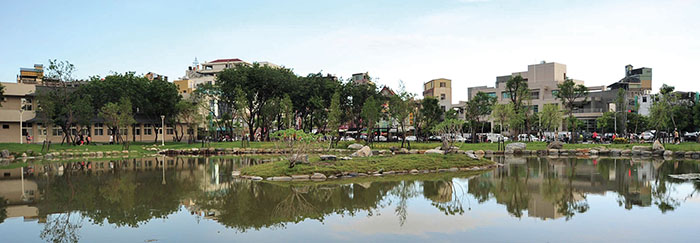Gangshan: One of Kaohsiung's Very Historical Regions/岡山,走過一把青春的大時代
Gangshan: One of Kaohsiung's Very Historical Regions
◎English translation: Wendy Wei Chang
◎Photos by Jheng Nai-hua, Pao Chung-hui
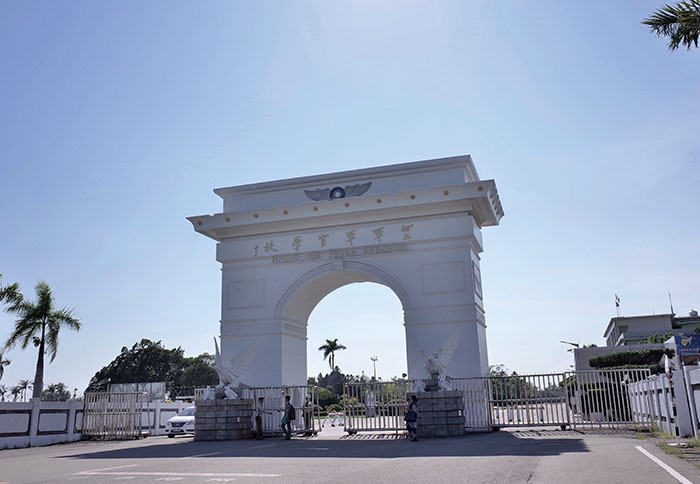 Kaohsiung's Gangshan District is known for its air force base, military dependent villages, fastener and screw manufacturers, restaurants serving mutton, spicy bean paste, longan berry nectar and Bamboo Basket Festival. Gangshan's Mass Rapid Transit System station went into operation in 2012, making it easier for visitors to travel to the region. Be sure to visit Sinsin Farmer's Market and nearby Shiluotan. After the war, many people moved away because the government acquisitioned the land. However, many people are like Ms. Liao Pei-yu and have returned to live in Gangshan to enjoy a slower paced life. She currently lives close to the Air Force Academy and often shops at the local market. Ms. Liao particularly enjoys the interacting with venders and the other customers there. One of the things she particularly likes is one of the vegetable venders who take the time to show her customers how to effectively wash and remove pesticides vegetables.
Kaohsiung's Gangshan District is known for its air force base, military dependent villages, fastener and screw manufacturers, restaurants serving mutton, spicy bean paste, longan berry nectar and Bamboo Basket Festival. Gangshan's Mass Rapid Transit System station went into operation in 2012, making it easier for visitors to travel to the region. Be sure to visit Sinsin Farmer's Market and nearby Shiluotan. After the war, many people moved away because the government acquisitioned the land. However, many people are like Ms. Liao Pei-yu and have returned to live in Gangshan to enjoy a slower paced life. She currently lives close to the Air Force Academy and often shops at the local market. Ms. Liao particularly enjoys the interacting with venders and the other customers there. One of the things she particularly likes is one of the vegetable venders who take the time to show her customers how to effectively wash and remove pesticides vegetables.
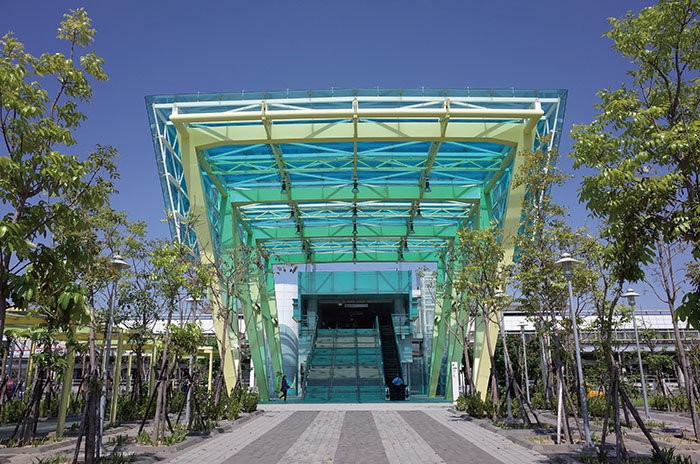
The former historical Japanese Naval Aviation Dormitory (Sing Village) is located further along from the market, along the same route which Ms. Liao's mother used to take to her clothing shop, which is now located at the rear of Kaohsiung's Main Station. Ms. Liao recalls how she often used to assist her mother to sell clothes on the weekends. When she graduated high school, she left home to study at university and work. She rented a place in Kaohsiung's downtown, but last year, she moved back to Gangshan and again embraces a slow paced lifestyle.
During World War II, this village was the headquarters of Imperial Japanese Navy Air Service. It was also the location of their main dormitories. Five two-story brick buildings with gable roofs can still be seen.
Half a century later, a TV show has been produced, which takes viewers back time and gives insight into the region's unique history. A touch of Green is a TV show that is based on Pai Hsien-yung's book, Taipei People. The story describes events during the period after WW II and describes events through the 1980s. The Republic of China acquired Taiwan after the allies defeated Japan. When the KMT was defeated by the communists in the Chinese Civil War, many Chinese families retreated to Taiwan. Many air force families traveled from Sichuan to Nanjing and then to Taipei, Taiwan. Gungshan's Sing Village was featured in the TV show as "Nanjing, Ren-ai East Village". Sing Village is located on Jieshou Road and is the sixth military dependent village, which is located near the Air force Academy. After the Nationalist government set up the Air Force Academy, the dormitory was inhabited by the school's flight instructors, who had come from Sichuan before they retreated to Taiwan then began living in the dormitory. The location of this dormitory was later transformed into Sing Village.
A touch of Green also depicts a touching love story between Air Force pilot Guo Jhen and Chu Cing. "I would really like to know which building Guo Jhen and Chu Cing had once lived," admits local resident Ms. Liao, who is an artist herself. She feels that even though in reality Sing Village is rather rundown, it still glows under the camera, with its beauty reflecting its historical significance. People do not only come to explore, but also pay their respect to history. However, the public is not allowed to enter Nanjing Ren-ai East Village and is currently heavily guarded by security.
On the other side of Agongdian River is the Lecyun Village located on Lecyun Road. This is more accessible for history lovers and explorers. Another location is the Imperial Japanese Navy Air Service's dormitories. After Kaohsiung City and County merged in 2010, the Village became a historical site. Visitors can take a walk through the three dormitories and officers' houses, with mulberry trees growing around the grounds. The officers' wooden houses are over 3,000 square feet, with their magnificent doors; they are far more extravagant than the instructor's dormitories. The previous residents were more recently relocated to newly built high-rises, known as the New Lecyun Community. Today, retired air force seniors still enjoy sitting in the Chinese style pavilion and play Chinese chess. These historical sites allow visitors to better understand the region and the way military dependent families once lived.
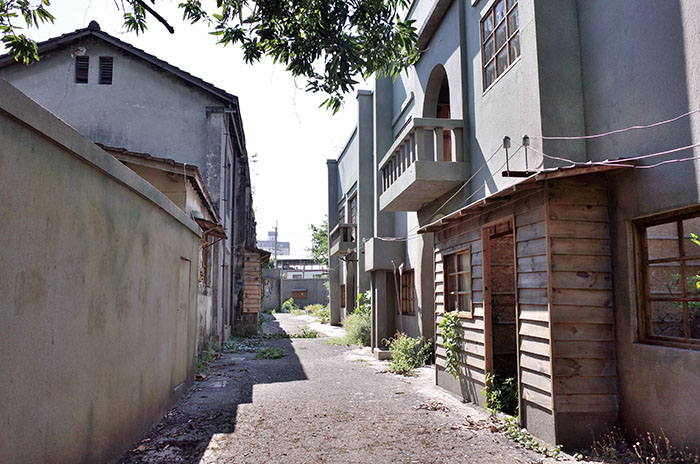
岡山,走過一把青春的大時代
◎文/鄭乃華
◎攝影/鄭乃華、鮑忠暉
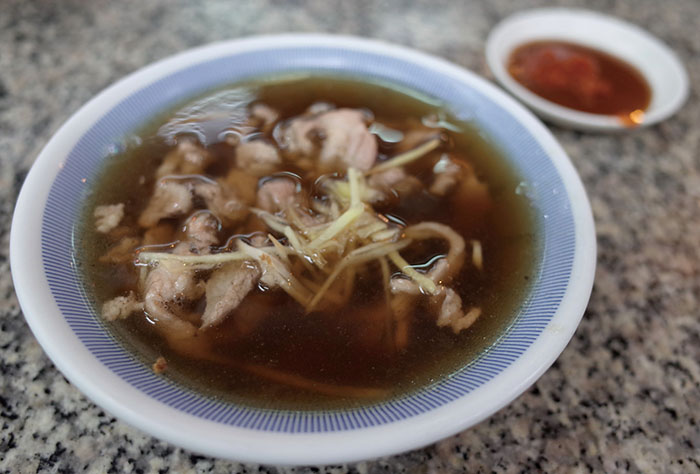 提及高雄市岡山區,腦袋裡馬上會出現許多關鍵字:空軍、眷村、螺絲、羊肉、辣豆瓣、龍眼蜜與籃籗會。二戰期間,岡山是日本海軍航空隊基地所在,因此成為美軍轟炸目標,躲空襲是母親小時候的記憶之一。這片戰爭洗禮過的土地,經過半世紀休養生息,再次透過影視作品讓我們回顧大時代的故事。
提及高雄市岡山區,腦袋裡馬上會出現許多關鍵字:空軍、眷村、螺絲、羊肉、辣豆瓣、龍眼蜜與籃籗會。二戰期間,岡山是日本海軍航空隊基地所在,因此成為美軍轟炸目標,躲空襲是母親小時候的記憶之一。這片戰爭洗禮過的土地,經過半世紀休養生息,再次透過影視作品讓我們回顧大時代的故事。
高雄捷運南岡山站2012年通車,到岡山又多了一個便捷的選項。家人在我三歲時搬離岡山,今次再回到岡山旅行,重新回味岡山。過中午時分,圓形造型的欣欣菜場,鐵皮下的菜販、肉攤該收的都收完了,剩一處還在整理收拾,賣菜婦人來自附近的石螺潭,曾姓與廖姓過去是石螺潭的大姓,由於土地被徵收,人口大量外移。住軍校附近的廖珮妤,經常到這裡買菜,她特別補充,大姊賣菜非常有良心,會明白告知殘存農藥該如何清洗!
從欣欣菜場旁邊一路延伸到醒村的那條街道,是當年廖媽媽從高雄市後驛(後火車站)批回成衣販賣的地方,這裡充滿廖珮妤小時候的記憶,假日幫忙賣衣服,在高雄市區租屋求學、工作,去年選擇回到岡山居住,慢活過日子。
電視劇《一把青》改編自白先勇作品《臺北人》短篇小說之一《一把青》,描寫1940到80年代,抗戰勝利、國共內戰、國民黨撤退台灣,空軍眷屬經歷從中國四川、南京到台灣台北的故事。
電視劇裡的「南京仁愛東村」,取景地就在岡山醒村,坐落在岡山區介壽路往空軍官校方向的第六個眷村,原為日治時期日本海軍航空隊高級飛行員的宿舍群,由五座兩層磚造斜頂的宿舍所組成。國民政府空軍三校遷台後,此區改為官校飛行教官宿舍,當時在四川成都的飛行教官所住宿舍,即稱為醒村。
電視劇《一把青》空軍軍官郭軫與朱青動人的愛情故事,成了高收視的焦點。「我真的很想知道郭軫和朱青是住哪一棟?」,廖珮妤囔囔著。這位與我同樣來自岡山的藝文同好,原來在一年前就到過此地晃遊,從事藝文相關工作的她,眼前的醒村看起來雖然殘破不堪,但每個角落在鏡頭底下,卻特別有味道,一種由時間積累而成、帶有歷史滄桑的美感,別處無法取代,我們像是勘景、也像在巡禮,原來,岡山也有隱藏版景點。不過,走到「南京仁愛東村」大門,有保全人員看哨,我們無法再進入。

相對於醒村戒備森嚴,在阿公店溪另一端,藏身樂群路巷弄的樂群村,平易近人許多,這裡也是當年日本所建的海軍航空隊宿舍群,2010年底縣市合併後,成為市定古蹟。
我們走過三排宿舍群,迎面而來的多是除戶的門牌、空蕩蕩的信箱,偶有家犬的吠聲、粒粒飽滿卻未摘食的桑葚樹,數百坪的木造屋,氣派的大門,可以想見當年軍官人家的風光。從此處還可見新建高聳的勵志國宅,從一端高速公路下交流道往岡山方向的省道,亦可看見它。
我們穿越籃球場,一旁中國特色的涼亭下,幾位老人圍棋中,就這樣度過一個下午,也是一派輕鬆。走完岡山軍眷村保留區,見證眷村生活隨著時間走入歷史。
